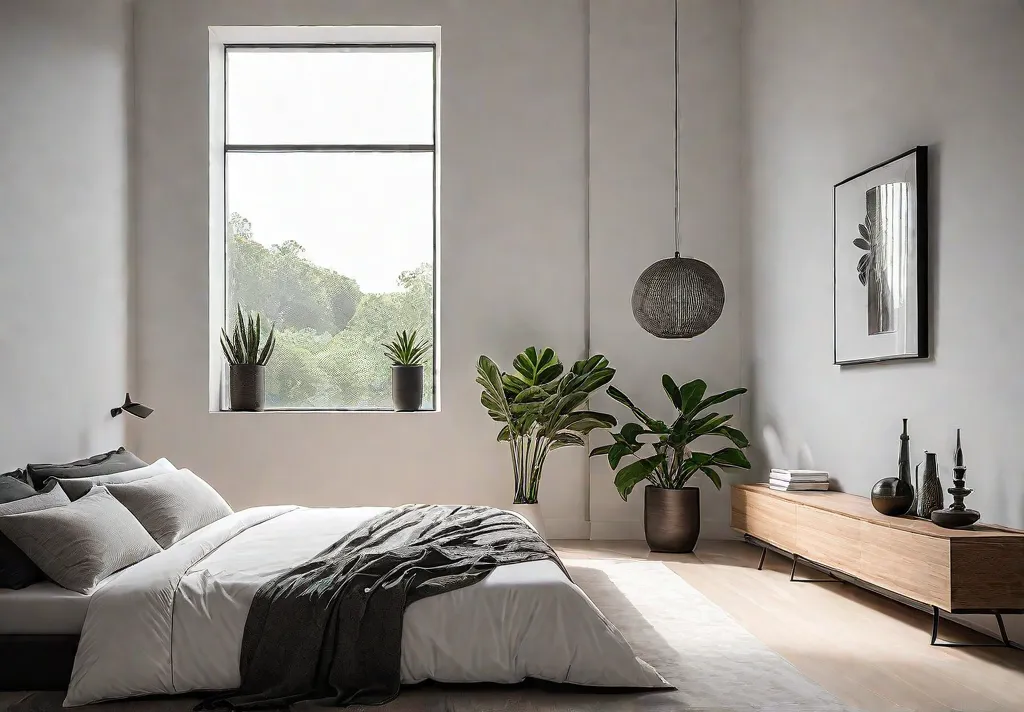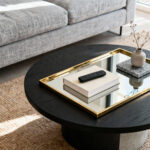As a home decorator, I’ve witnessed firsthand the transformative power of color in shaping the ambiance and energy of a space. Your bedroom, in particular, is a sacred sanctuary where you retreat to recharge and find solace after a long day. The colors you surround yourself with can profoundly influence your mood, emotions, and overall well-being. Whether you’re drawn to the serene tranquility of minimalist hues or the bold vibrancy of maximalist palettes, the psychology of color offers a fascinating lens through which to curate a bedroom that truly resonates with your personality.
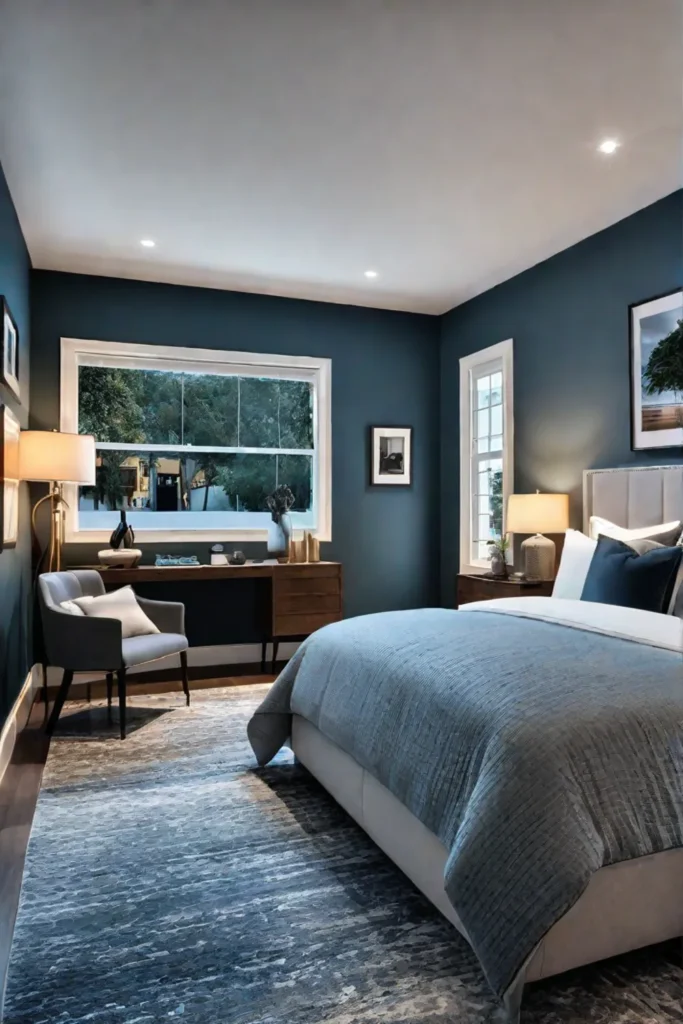
In this article, we’ll delve into the science behind color and emotion, exploring how our biological and cultural influences shape our perceptions and responses to different hues. From the calming embrace of cool tones to the energizing warmth of vibrant shades, we’ll uncover the secrets to creating a bedroom oasis that not only looks beautiful but also nurtures your unique sensibilities and fosters a sense of harmony and rejuvenation.
Understanding the Psychology of Color
Colors have a profound impact on our emotions and behavior, influencing everything from our mood to our perception of a space. As a home decorator, understanding the psychology behind color is crucial in creating a bedroom that not only looks beautiful but also promotes a sense of well-being.
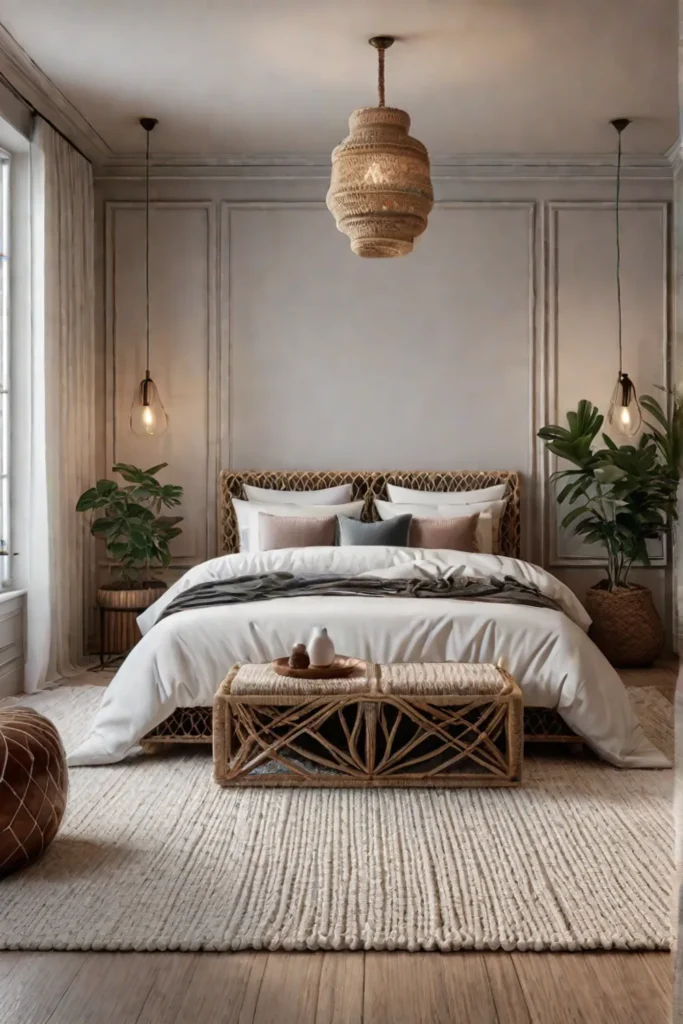
The Science Behind Color and Emotion
At the most fundamental level, our emotional responses to color are rooted in biology. Warm colors like red, orange, and yellow are associated with energy, passion, and stimulation because they mimic the warmth of fire and sunlight. Cool colors like blue, green, and purple, on the other hand, evoke feelings of calmness and serenity, reminiscent of the tranquility of nature.
Interestingly, these color associations are not entirely universal. While some emotional responses to color are hardwired into our biology, others are shaped by cultural influences and personal experiences.
Cultural Influences on Color Perception
Color symbolism and associations can vary greatly across cultures. For example, in Western societies, white is often associated with purity and innocence, while in some Eastern cultures, it symbolizes mourning and death. Similarly, red is seen as a bold, passionate color in the West, but in China, it represents good luck and prosperity.

As a designer, it’s essential to be mindful of these cultural nuances when working with clients from diverse backgrounds. By understanding their cultural perspectives on color, you can create a space that resonates with their values and beliefs.
Practical Tips for Choosing Bedroom Colors
When selecting colors for your bedroom, consider the mood you want to create:
- For a serene, calming atmosphere, opt for cool hues like soft blues, greens, or lavenders.
- If you prefer a more energetic and passionate vibe, warm tones like reds, oranges, or yellows might be a better fit.
- Neutral colors like white, beige, or gray can provide a sense of balance and can be either warm or cool depending on their undertones.
Don’t forget to use a color wheel to identify complementary and contrasting colors that can add depth and interest to your palette.
Key Takeaways
Color has a powerful impact on our emotions and behavior, and understanding the psychology behind it can help you create a bedroom that reflects your personality and promotes well-being. While some color associations are universal, cultural influences also play a significant role in how we perceive and respond to different hues.
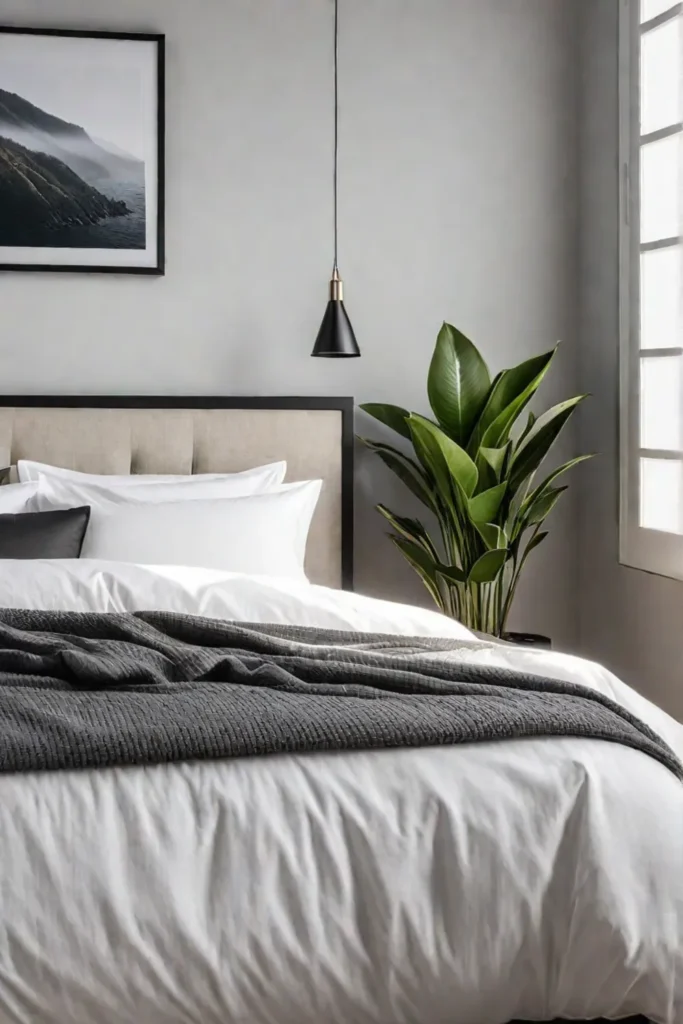
By considering the mood you want to create, as well as any cultural nuances, you can choose a color palette that not only looks beautiful but also fosters a sense of harmony and tranquility in your sanctuary.
For those seeking a serene and calming bedroom environment, a minimalist color palette can be the perfect choice. In the next section, we’ll explore the art of creating a tranquil oasis with carefully curated hues that promote relaxation and inner peace.
Minimalist Color Palettes for the Zen Seeker
When it comes to creating a serene and peaceful oasis in your bedroom, a minimalist approach to color can work wonders. Embracing the principles of simplicity, functionality, and clutter-free living, minimalist color palettes offer a sense of calm and tranquility that can help you unwind and recharge after a long day.
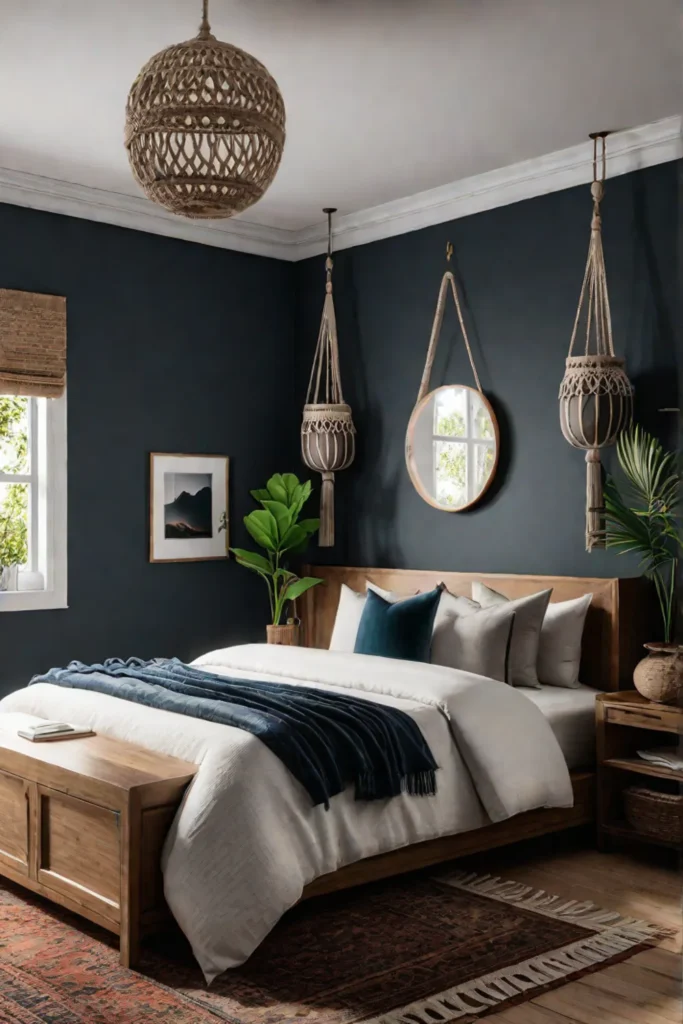
Creating a Serene Sanctuary with Neutral Tones
The foundation of a minimalist color scheme lies in the use of neutral tones, such as white, gray, and beige. These colors exude a sense of serenity and allow your mind to relax, making them the perfect choice for a bedroom sanctuary. Consider painting your walls in a soft, warm white or a soothing shade of greige (a blend of gray and beige) to create a calming atmosphere.
To add depth and interest, play with varying shades of the same color. For instance, you could incorporate different tones of gray, ranging from light to charcoal, in your bedding, curtains, and accent pieces. This monochromatic approach not only looks sophisticated but also creates a cohesive and harmonious space.
Adding Depth and Interest with Texture
While minimalist color palettes are inherently simple, incorporating texture is crucial to prevent the space from feeling cold or sterile. Natural materials like wood, linen, and stone can add warmth and character to your minimalist bedroom. Consider a wooden headboard, a plush linen duvet cover, or a jute area rug to introduce organic elements that complement the neutral color scheme.
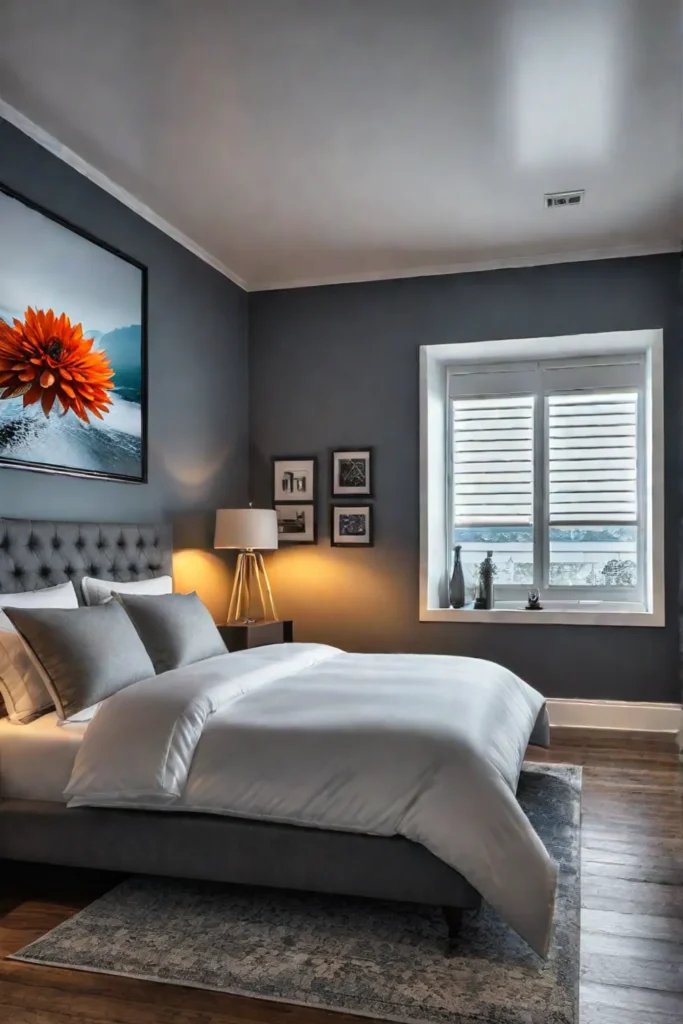
Furthermore, textures can create visual interest and depth, compensating for the lack of bold colors. For example, a woven throw blanket or textured wallpaper can add subtle dimension to the space without overwhelming the calming atmosphere.
One of the key benefits of embracing a minimalist color palette is the psychological impact it can have on your well-being. Studies have shown that minimalist living spaces can reduce stress and improve focus, allowing you to start and end your day in a peaceful state of mind. By eliminating visual clutter and embracing the serenity of neutral tones, you create an environment that promotes relaxation and mindfulness.
To incorporate minimalist principles into your bedroom without making it feel cold or sterile, strike a balance between simplicity and warmth. Incorporate cozy textiles, natural materials, and strategic pops of color through accent pieces or artwork. Remember, minimalism is not about deprivation but rather about intentional living and finding joy in the essentials.
In the end, a minimalist color palette can transform your bedroom into a serene sanctuary, where you can escape the chaos of daily life and recharge your mind, body, and soul.
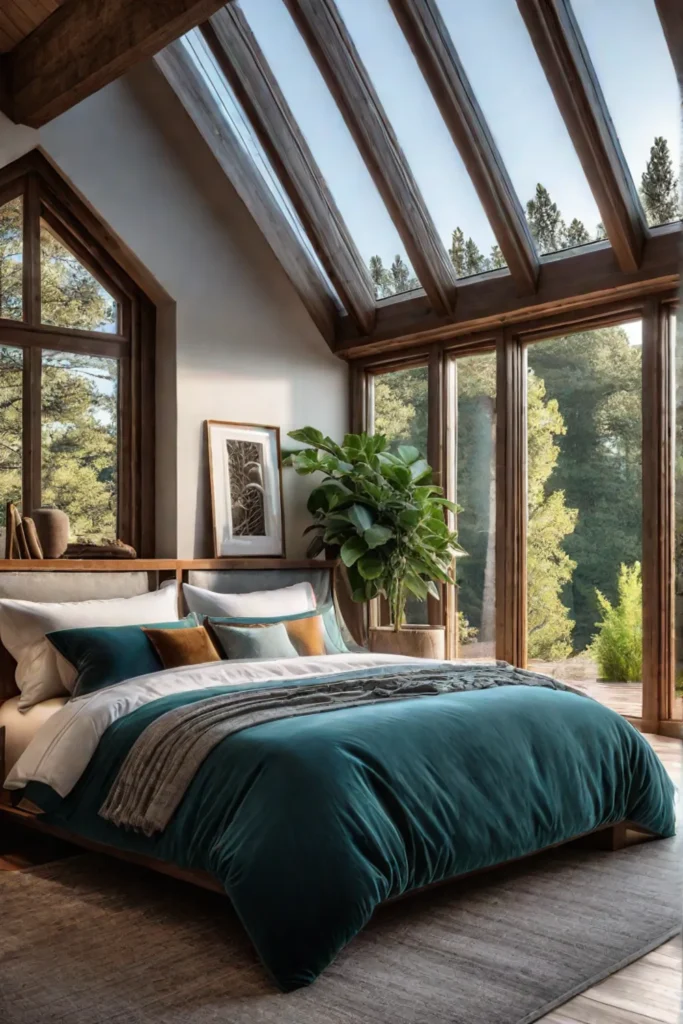
For those who crave a vibrant and expressive bedroom space, maximalist color palettes offer a world of possibilities. Embracing a bold and eclectic approach to color can infuse your sanctuary with energy, creativity, and a sense of individuality that reflects your unique personality.
Maximalist Color Palettes for the Bold and Eclectic
For the daring and expressive souls among us, a maximalist approach to bedroom decor offers a canvas for unleashing creativity and letting your vibrant personality shine. In this realm, color reigns supreme, with no rules dictating what hues or patterns are off-limits. It’s a world where the more, the merrier, and the only limit is your imagination.
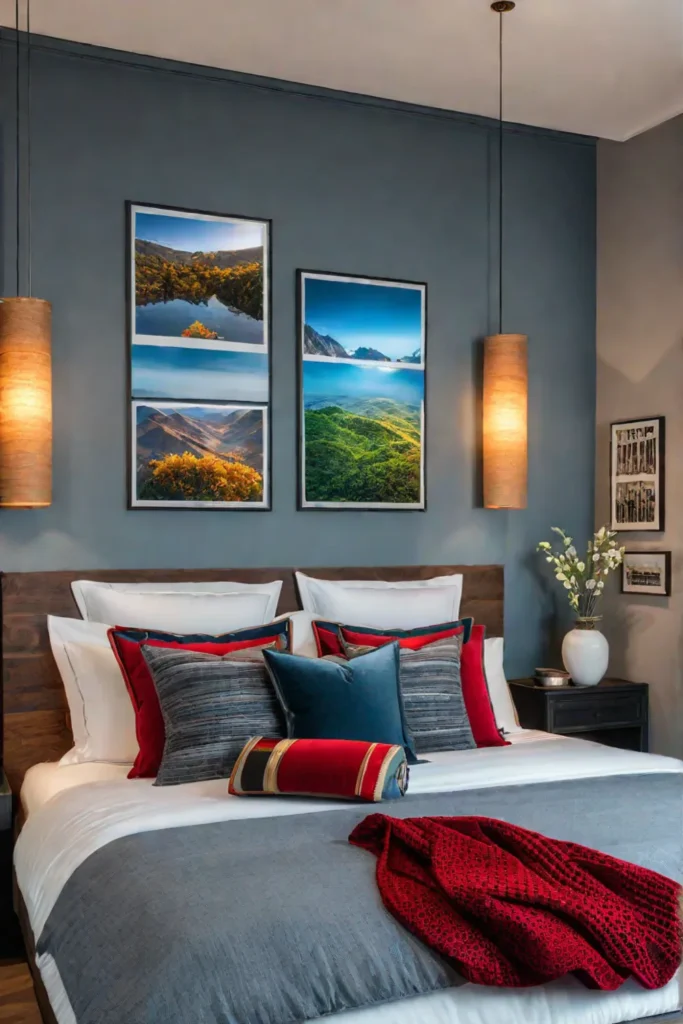
Embracing Boldness with Vibrant Hues and Patterns
Maximalism is all about embracing the bold and the beautiful. Think rich jewel tones like emerald green, sapphire blue, and amethyst purple, paired with vibrant pops of color like tangerine orange or fuchsia pink. Don’t be afraid to mix and match patterns, either – the more eclectic, the better! A floral wallpaper can be complemented by a striped area rug and a geometric print bedspread, creating a delightfully layered and visually stimulating space.
Creating a Cohesive Look with Layered Textures and Patterns
While maximalism revels in excess, it’s essential to strike a balance to prevent the space from feeling overwhelming. The key is to create a cohesive look by layering different textures and patterns. Start with a focal point, such as a statement headboard or a bold accent wall, and build your color palette around it. Then, incorporate complementary textures like velvet, brocade, and embroidered textiles to add depth and interest.
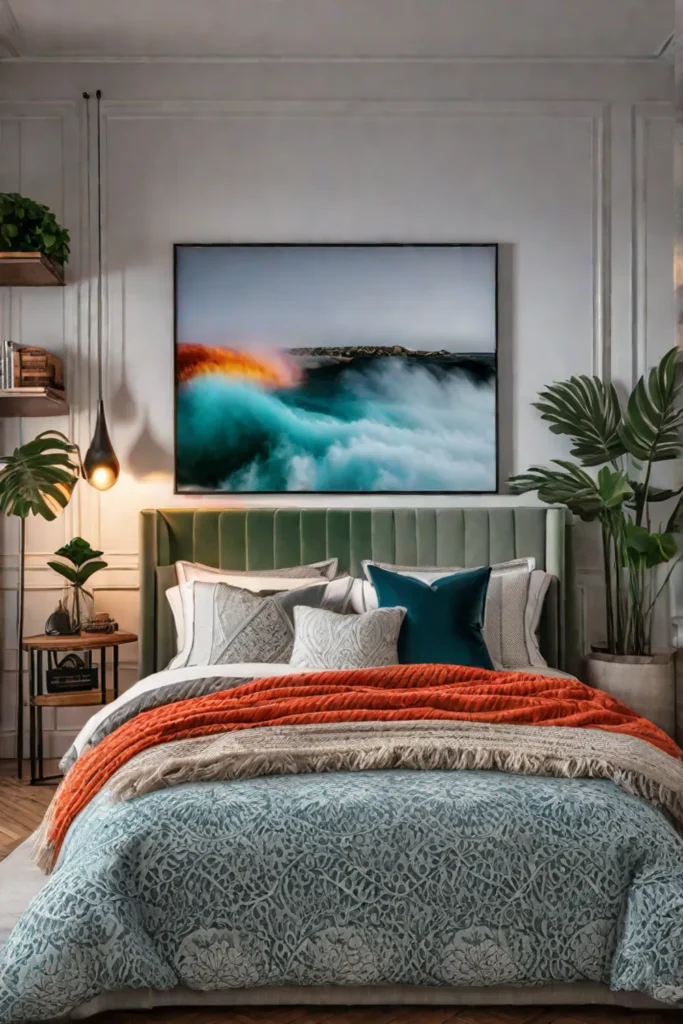
One of the beauties of maximalist design is that it allows you to showcase your unique personality and interests. Incorporate vintage and antique pieces that hold sentimental value or reflect your travels and hobbies. A vibrant Persian rug, a hand-carved wooden chest, or a collection of colorful pottery can add character and storytelling to your space.
Remember, when it comes to maximalism, there are no hard and fast rules. It’s all about embracing your individuality and creating a space that is a true reflection of your bold and eclectic spirit. So go ahead, mix those patterns, layer those textures, and let your creativity run wild!
As we transition to the next section, we’ll explore how your personality – whether you’re an introvert or an extrovert – can influence your color palette choices, ensuring that your bedroom is not just a visual feast but also a sanctuary that aligns with your energy and mood.
Personality-Matching Your Palette: Introvert vs. Extrovert
As someone who firmly believes that our living spaces should reflect our authentic selves, I find the connection between personality and color fascinating. Introverts and extroverts have distinct energy levels and sensory needs, and tailoring your bedroom’s color palette accordingly can create an environment that feels truly supportive.
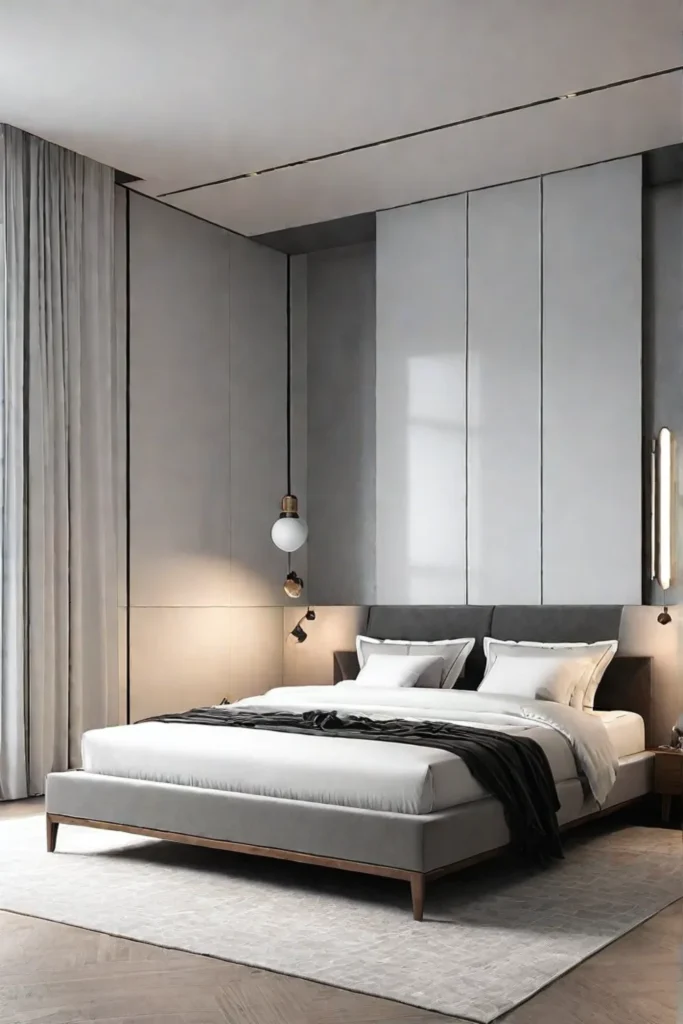
Creating a Restful Retreat for Introverts
If you’re an introvert, you likely crave a calm and serene sanctuary to recharge after navigating the stimulating world outside. Cool, muted tones like soft blues, tranquil greens, and soothing lavenders can create a sense of tranquility in your bedroom. These colors have been shown to have a calming effect, promoting better sleep quality and reducing overstimulation.
One of my favorite tricks for introverted clients is to paint an accent wall in a deeper, richer shade of their chosen color. This creates a cozy, cocoon-like feeling, perfect for curling up with a good book or indulging in quiet reflection.
Designing an Energetic Haven for Extroverts
On the other hand, extroverts often thrive on energy and social interaction. For them, a bedroom filled with warm, vibrant hues like fiery reds, sunny yellows, and bold oranges can create an invigorating atmosphere. These colors are known to stimulate the mind and boost mood, making it easier to wake up feeling refreshed and ready to take on the day.
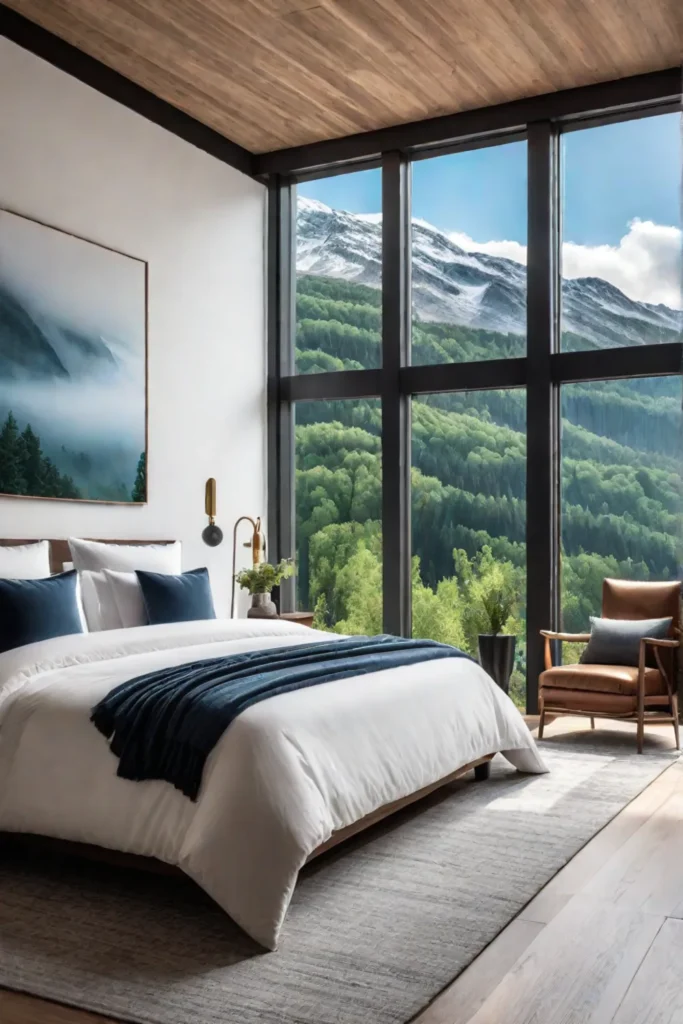
One of my favorite extroverted clients recently embraced an open-concept bedroom with a lively color scheme. By incorporating bright accent pieces and patterned textiles, we created a space that felt alive and energizing, perfect for hosting impromptu gatherings or simply basking in the vibrant energy.
Remember, color is just one aspect of creating a personality-aligned space. Incorporating textures, patterns, and personal touches can further enhance the overall vibe. For introverts, cozy fabrics and minimalist decor can cultivate a sense of privacy and calm. For extroverts, bold patterns and eclectic pieces can add visual interest and spark conversation.
The key takeaway? Your bedroom should be a reflection of your unique personality, providing a sanctuary that supports your energy levels and sensory needs. By thoughtfully selecting colors that resonate with your introverted or extroverted nature, you can create a space that feels authentically you.
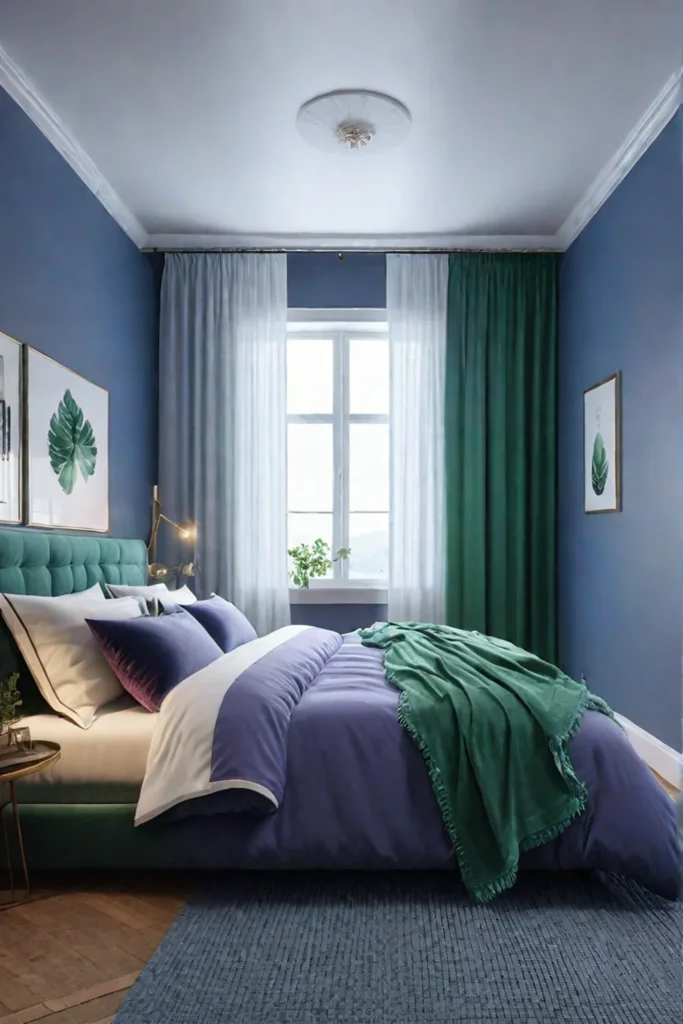
As we move beyond color, there are countless ways to infuse your personality into your bedroom decor. In the next section, we’ll explore how to incorporate your unique style through textures, patterns, and personal touches.
Beyond Color: Incorporating Personality Through Decor
While color is a powerful tool for expressing your personality in the bedroom, it’s just the beginning. To truly create a space that feels like an extension of yourself, you’ll want to incorporate textiles, artwork, and personal items that reflect your unique interests and passions.
Expressing Yourself Through Textiles and Patterns
Textiles are the unsung heroes of bedroom decor, adding depth, texture, and personality to the space. Don’t be afraid to mix and match patterns and textures that speak to you. A cozy, chunky knit throw can lend a bohemian vibe, while crisp, geometric prints can give a more modern, minimalist feel. The key is to choose textiles that make you feel at home and happy.
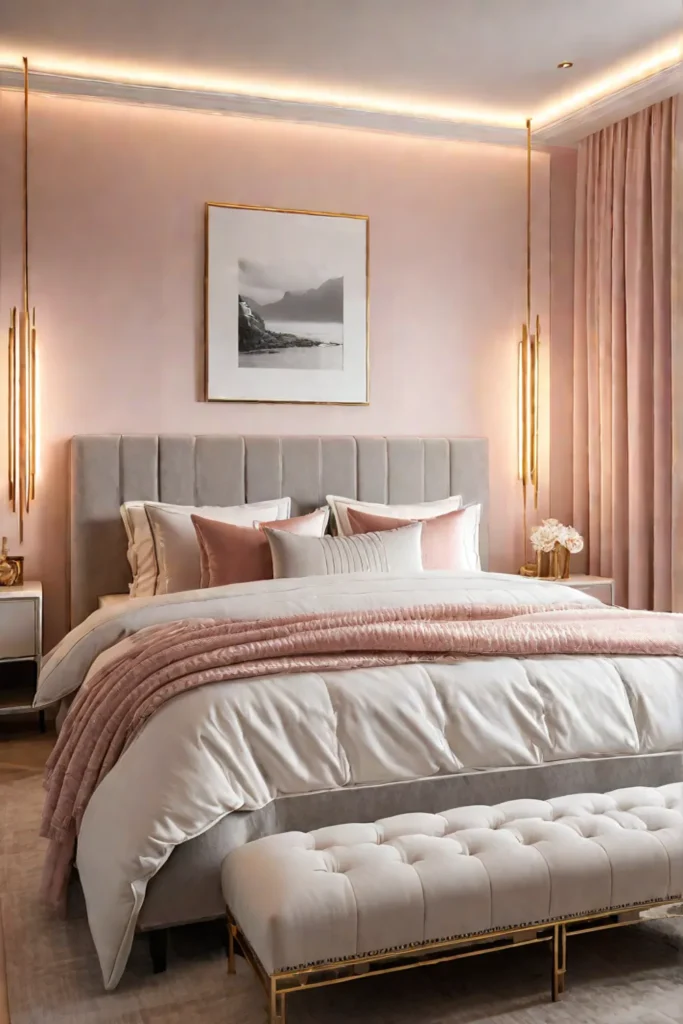
Curating a Gallery Wall that Reflects Your Passions
A well-curated gallery wall can be a powerful expression of your personality and the things that inspire you. Whether you’re an avid traveler, a music lover, or an art enthusiast, a gallery wall allows you to showcase the pieces that bring you joy and evoke happy memories. Don’t be afraid to mix and match frames, sizes, and mediums – the eclectic mix is what makes it truly unique and personal.
Studies have shown that surrounding ourselves with personal items and mementos can improve our mood, reduce stress, and boost creativity. Our homes are more than just physical spaces – they serve as a reflection of our personal histories, values, and aspirations. By incorporating elements of nature, like plants or natural materials, you can create a calming, restorative atmosphere that promotes relaxation and well-being.
So, don’t be afraid to let your personality shine through in your bedroom decor. Incorporate personal items that inspire you, like travel souvenirs, books, or musical instruments, to make the space feel truly like home. By surrounding yourself with things that bring you joy, you’ll create a sanctuary that not only looks beautiful but also feels like a perfect reflection of who you are.
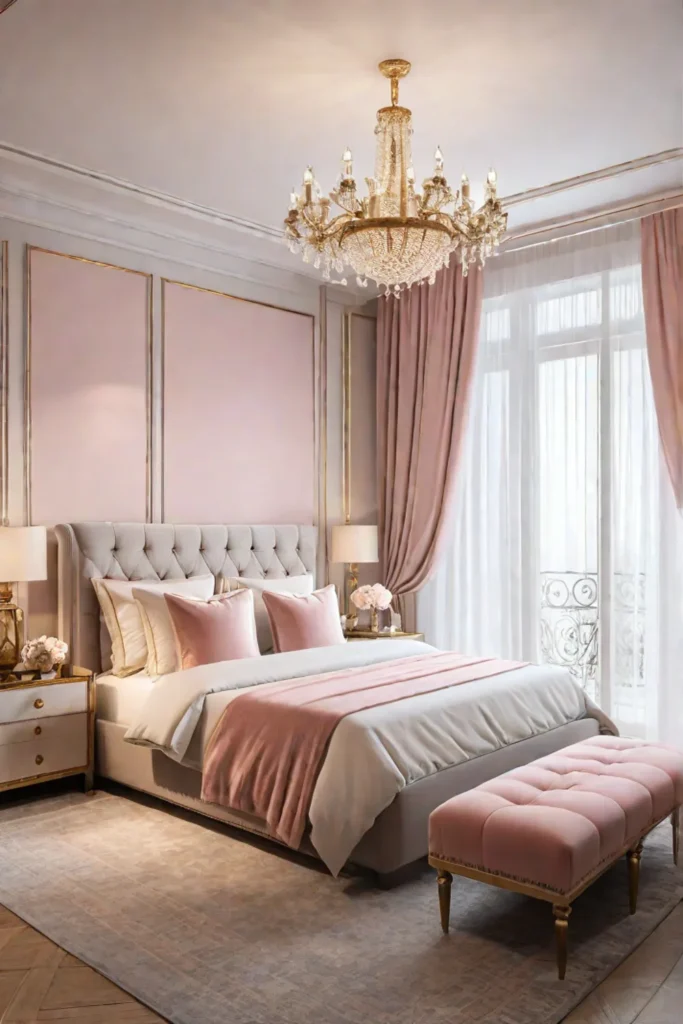
As we move towards the conclusion, remember that personalizing your space is about more than just aesthetics – it’s about creating an environment that nurtures your well-being and allows you to thrive.
Wrapping Up
As we’ve explored, color is a powerful language that speaks directly to our emotions and personalities. Whether you gravitate towards the serenity of minimalist palettes or the exuberance of maximalist hues, the key is to create a bedroom space that feels authentically you. By understanding the psychology behind color and embracing your natural inclinations, you can curate a sanctuary that not only looks beautiful but also supports your well-being and allows you to thrive.
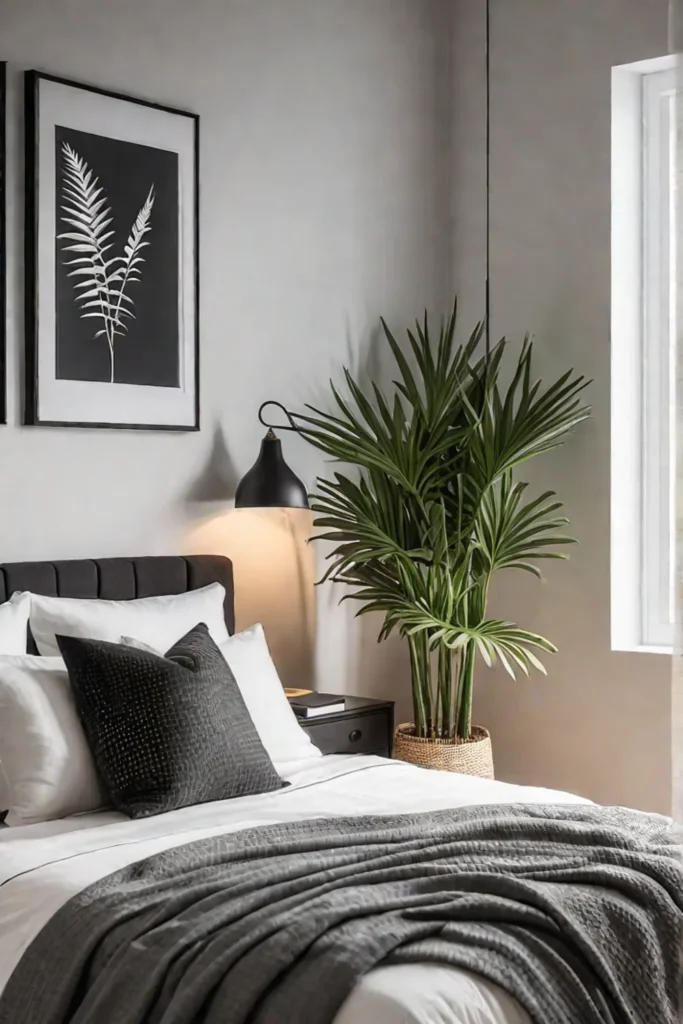
Remember, your bedroom is more than just a physical space – it’s a reflection of your inner world, a canvas upon which you can express your individuality and find solace. So, embrace the power of color, experiment with textures and patterns, and surround yourself with personal touches that evoke joy and inspiration. Your bedroom should be a haven where you can truly be yourself, a space that nurtures your soul and empowers you to face the world with renewed energy and vitality.
As you embark on this journey of self-expression through color and design, remember that the possibilities are endless. Trust your instincts, embrace your unique personality, and create a bedroom oasis that resonates with the deepest layers of your being. After all, home is where the heart is, and your bedroom should be a true reflection of the vibrant, multifaceted essence that makes you who you are.
